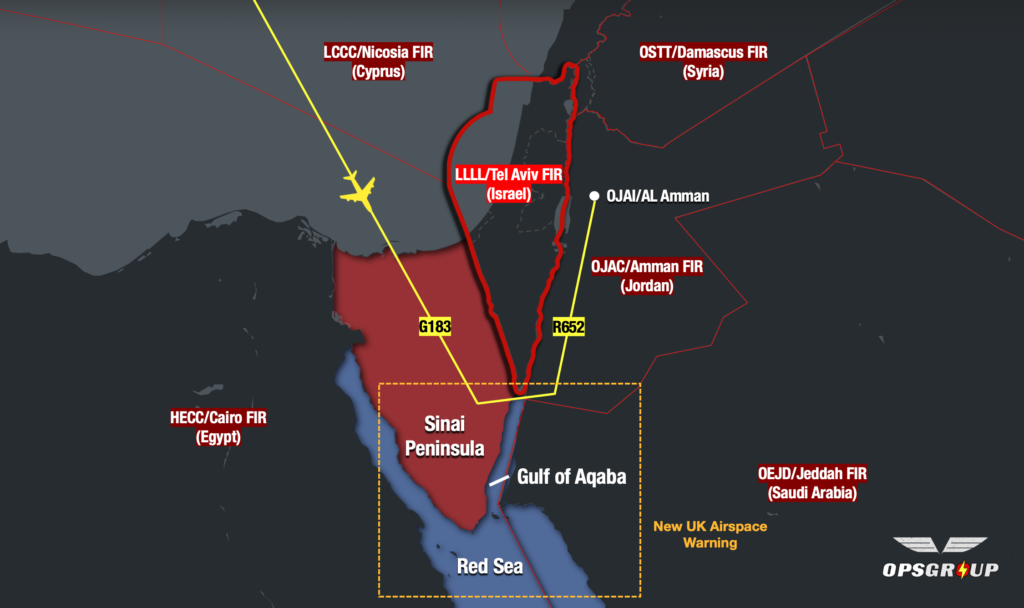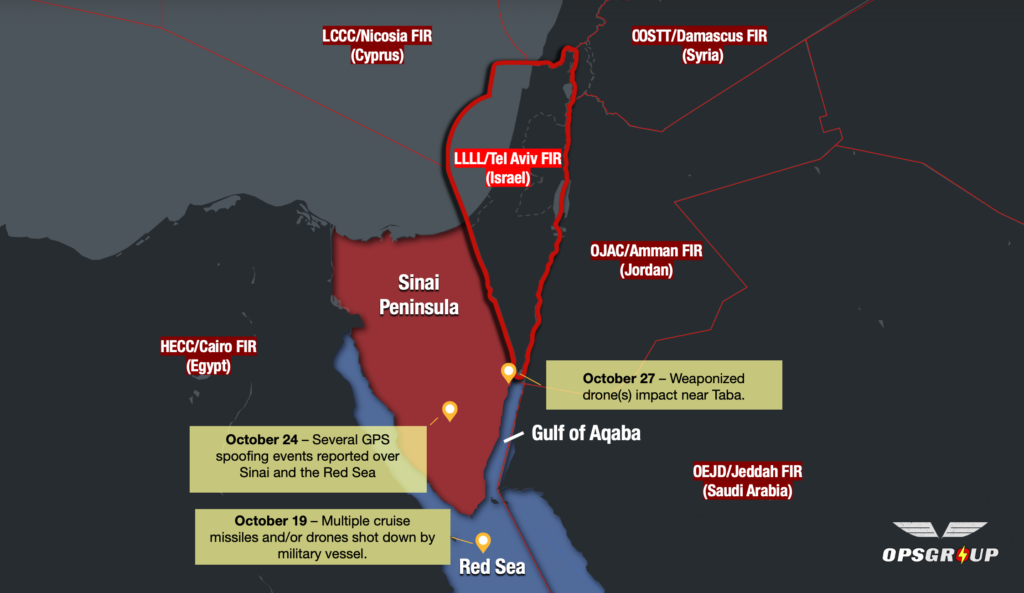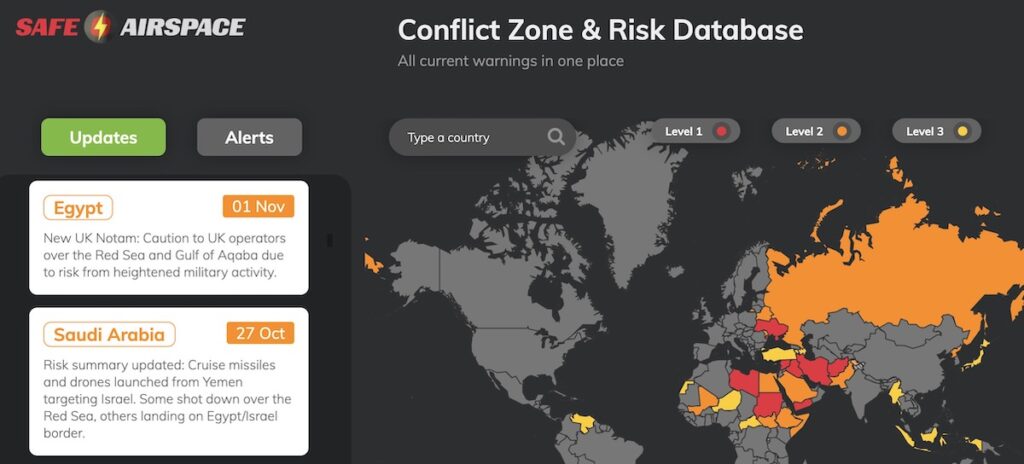With the Israel-Gaza conflict ongoing, a lot of traffic is re-routing well clear of the LLLL/Tel Aviv FIR via parts of the Sinai Peninsula, the Red Sea and into Saudi Arabia via the Gulf of Aqaba. Especially those flights bound for Amman, Jordan.
The problem is that spill-over risks from the conflict are now extending beyond the boundaries of Israeli airspace and into this busy corridor. We’ve reported a number of these instances in the past few weeks.
On Nov 1, the UK CAA published a new airspace warning via Notam:
 Airspace warnings aren’t new for the Sinai Peninsula – but are for the Red Sea and Gulf of Aqaba. So, what has made the UK issue this one now?
Airspace warnings aren’t new for the Sinai Peninsula – but are for the Red Sea and Gulf of Aqaba. So, what has made the UK issue this one now?

The UK’s new airspace warning lies within or close to busy routes being flown by major carriers.
Recent Events
- Oct 27 – a weaponised drone struck a town near Egypt’s border with Israel near Taba. This was likely launched by Yemen’s Houthi group from Yemen, or the Red Sea itself.
- Oct 24 – Several OPSGROUP members reported GPS spoofing events resulting in the aircraft showing its position over Tel Aviv, Israel. Several hotspots were identified, including over the Sinai Peninsula and Red Sea. You can read more about those here.
- Oct 19 – At least one cruise missile or drone was shot down by a US Naval vessel over the Red Sea, reportedly launched from militants in Yemen and targeting Israel.

While militant activity on the Sinai Peninsula and adjacent regions is a known threat, the conflict in Israel has changed the risk picture. These groups have suddenly become more active and their attacks more sporadic. This may not be evident in existing airspace warnings issued by Germany and the US FAA – the latter having been around for years.
Is it safe enough to overfly?
There is no definitive answer to this question – as the UK Notam above alludes to, potential risks need to be taken into account and the appetite for those will vary from operator-to-operator.
Here’s what we do know though:
It is better to fly higher. All existing warnings for the Sinai Peninsula (and now adjacent regions including the Red Sea) advise operators to stay above FL250/260. This is likely due to the risk of militant groups with access to anti-aircraft weaponry such as man portable air defence systems (MANPADS).
The chance of misidentification by the military is low, but not zero. Military vessels active in the Red Sea are equipped with sophisticated and long-range air defence systems capable of reaching all levels. It is extremely unlikely that a civil aircraft would be misidentified – but history has shown that accidents can happen.
Know what to do if you are spoofed. As opposed to GPS jamming, spoofing is insidious and potentially confusing. Your aircraft may not even alert you that something has gone wrong. We have a Briefing, Guide and Map on GPS spoofing which you can access here. In the worst cases, the impact has been severe: complete loss of on-board nav requiring ATC vectors, IRS failure, and unnoticed off-track navigation towards danger areas and hostile airspace.
Think about diversions. If you need to land in a hurry (especially in Sinai), you are exposing yourself to increased risk of anti-aircraft fire, small arms fire and mortar attacks by groups with a known intent to attack civilian interests, possibly motivated by current events.
Alternative Routes?
Flight tracking shows major airlines are still overflying Southern Sinai and the Red Sea. The only option to avoid the region completely involves a long diversion south.
Unfortunately for those bound for Jordan and perhaps Kuwait, this means extended flight times. If you do decide to overfly the Sinai and Red Sea region, know that just because airways are open (and well used) doesn’t mean they are completely safe.
Updates
For more info and updates, check Safeairspace.net – our Conflict Zone & Risk Database.
More on the topic:
- More: Sharm El Sheikh reopens to international traffic, conflicting views on that …
- More: Monday Briefing: Sinai Airspace avoided, Low Vis creates day of chaos
More reading:
- Latest: Venezuela & Caribbean Airspace Update
- Latest: ReFuelEU: Europe’s new anti-tankering rules explained
- Latest: Milan targets business jets with 650% rate increase
- Safe Airspace: Risk Database
- Weekly Ops Bulletin: Subscribe
- Membership plans: Why join OPSGROUP?












 Get the famous weekly
Get the famous weekly 





